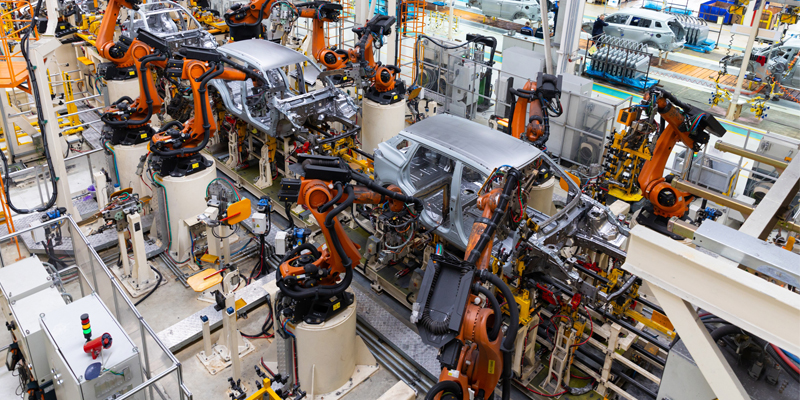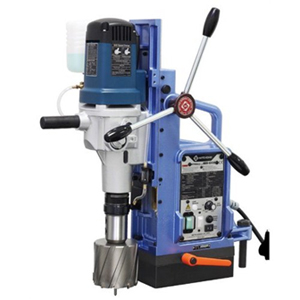Schedule a Call Back
Will revised MSME classification solve their funding puzzle?
 Articles
Articles- Apr 30,25

Table 1: Break-up of business loan applications
Types of Loans | Share |
Working capital expenses | 45% |
Purchase RM and maintain inventories | 24% |
Marketing and advertising | 15% |
Other needs | 16% |
Source: Paisabazaar.com
Policy push
According to Meghrajani, as of September 2024, overall MSME credit stood at Rs 32.58 trillion. While MSME lending continues to grow, the pace has slowed. “Bank MSME portfolios saw growth moderated from 20.7 per cent in FY24 to an annualised 10.7 per cent in H1FY25. For NBFCs, growth declined sharply from 33.6 per cent to 14 per cent over the same period, reflecting broader credit deceleration and emerging asset quality concerns. Despite this, the MSME share in NBFC portfolios has risen from 5.9 per cent in FY21 to 9.1 per cent in H1FY25—a more than 50 per cent increase on a low base. In contrast, banks’ MSME exposure has remained steady around 16–16.5 per cent,” he says.
The Indian government has a variety of credit schemes aimed at supporting small business owners and entrepreneurs in many industries. These schemes are intended to empower prospective entrepreneurs, spur economic growth, and generate employment. Meghrajani opines, "Some of the prominent Schemes launched by the GoI to promote credit funding include, Pradhan Mantri MUDRA Yojana (PMMY), Credit Guarantee Fund Trust for Micro and Small Enterprises (CGTMSE) scheme, and Emergency Credit Line Guarantee Scheme (ECLGS) launched during Covid. Recently, the Government of India in budget has enhanced the investment and turnover thresholds for MSME classification, with investment limits raised by 2.5 times and turnover limits doubled. A new Mutual Credit Guarantee Scheme has also been introduced, offering a 60 per cent guarantee on loans up to Rs 1 billion. These measures are aimed at easing access to capital, particularly for the purchase of new machinery and equipment. Furthermore, initiatives such as the PMMY, enhancement of CGFMU guarantee coverage from Rs 1 million to Rs 2 million, and platforms like Udyam Registration, Udyam Assist, GST Sahay, TReDS (Trade Receivables electronic Discounting System), and broader digital public infrastructure are collectively enabling deeper credit penetration and support for MSMEs across geographies."
Table 2: MUDRA loans (under PMMY) in last 5 years
Financial Year | No. of PMMY Loans Sanctioned | Amount Disbursed (in Rs billion) |
2024-25 | 49409301 | 5119 |
2023-24 | 66777013 | 5323.58 |
2022-23 | 62310598 | 4504.24 |
2021-22 | 53795526 | 3314 |
2020-21 | 50735046 | 3117.54 |
Source: MUDRA Portal
According to a State Bank of India (SBI) Research report, credit availability for India's MSMEs has seen a remarkable rise, with lending to the sector more than tripling from Rs 8.5 trillion in FY14 to Rs 27.25 trillion in FY24, and projected to approach Rs 30 trillion by FY25. Over the past decade, more than 520 million MUDRA accounts have been opened, predominantly under the 'Shishu' category (for loans up to ?50,000). However, the share of Shishu loans has declined from 93 per cent in FY16 to 51.7 per cent in FY25, reflecting a natural business progression towards higher credit limits under the 'Kishor' category (for loans between Rs 50,001 and Rs 500,000), the report noted.
Table 3: Credit availability for India's MSMEs
Years | Lending Amount |
FY14 | Rs 8.5 trn |
FY24 | Rs 27.25 trn |
FY25 | Rs 30 trn |
Source: SBI Research
With 63 million MSMEs, 95 per cent of which are micro-enterprises, the demand far outstrips the supply of affordable credit. Banks often prioritise larger loans due to the similar effort required in processing, leaving smaller enterprises underserved. While attitudes are changing, the pace isn't fast enough to meet the sector's needs. Agarwal says, "For far too long, MSMEs, especially the micro and small businesses, have been left out of the formal lending ecosystem. Traditional lending models have expected them to produce audited financials and paperwork they often just don't have. Bridging this gap required solving two big challenges. First, there was a need for alternative lending models that don’t depend on traditional financial data. Second, we needed to figure out how to offer small-ticket loans while keeping the unit economics viable — which means building a lean, tech-driven model." Thankfully, the last decade witnessed confluence of several favourable events. Agarwal explains, "With Aadhaar based ecosystem, open-data architecture, and the overall push toward digitalization, we now have, based on a rigid consent mechanism, access to rich, alternative data that makes credit underwriting possible for these micro and small businesses. At Ambit Finvest, we’ve built our model exactly around this new reality. We're a new-age lender, combining deep on-ground market understanding with a strong technology backbone. Our policies are tailored to meet the unique requirements of each micro market and our completely digital processes enable us to deliver credit quickly, efficiently and affordably." While initiatives like CGTMSE and emergency credit lines during COVID-19 have provided relief, their reach isn't as extensive as needed. "For instance, a company seeking a Rs 5 million loan might still face hurdles despite these schemes. However, there's a positive shift with banks moving from asset-based to cash flow-based lending, leveraging data from platforms like the GST portal. This change is promising, but there's still a long way to go to ensure widespread access,” comments Srinivasan.
Bridging the finance gap for MSMEs
The Government of India is actively working to enhance MSMEs' access to finance. Decentralised credit, through platforms like fintech companies, peer-to-peer (P2P) lenders, and blockchain solutions, is offering MSMEs faster, more flexible, and inclusive financing options. Initiatives like the Open Credit Enablement Network (OCEN), Account Aggregator (AA) framework, and Open Network for Digital Commerce (ONDC) are further accelerating formal credit flow and expanding market access for small businesses.
For example, Aditya Birla Capital is embedding finance directly into MSME business workflows making credit accessible contextually on supply chain platforms, OCEN, ONDC etc. The company is expanding its Udyog Plus platform to strengthen its B2B digital ecosystem, streamlining onboarding through straight-through and assisted digital journeys. This makes credit faster and more accessible for MSMEs, especially in manufacturing.
Jitendra Meghrajani observes, "The rapid adoption of digital lending platforms and fintech solutions is transforming MSME financing in India, enabling quick, paperless, and collateral-free loans. Lenders including fintechs are leveraging alternative data—such as GST returns, bank statements, e-commerce sales, and UPI transactions—to assess creditworthiness and cash flows in real-time, complementing with audited financials. The AA framework, now integrated with GSTN, further facilitates secure data sharing, enabling cash-flow-based lending for underserved MSMEs. AI/ML models are also enhancing credit risk assessment by analysing diverse datasets, including sales trends and behavioural patterns, leading to more better underwriting, customised products, and lower operational costs."
According to him, the RBI’s TReDS platforms – like RXIL, M1xchange, and Invoicemart – have been a game-changer for MSME invoice finance by connecting suppliers with multiple financiers online.
Srinivasan adds, "Yes, there's a growing trend towards cash flow-based lending. Platforms like TReDS allow MSMEs to get their invoices discounted, providing immediate liquidity. If large corporations and government entities mandate transactions through such platforms, it could revolutionise MSME financing by ensuring timely payments and reducing reliance on traditional credit."
Speaking about the important of technologies and digital tools for the growth of MSME loan portfolio, Sabnavis says, "Given their large numbers and the fact that they are scattered across the country, the digital medium is the best way for them to access formal credit channels. This is where fintech companies play a role. Also, co-lending by banks with NBFCs is a model which is largely undertaken on a digital platform. The digital platforms are accessible and offer seamless processes as far as SMEs are concerned."
Fintech revolution
Since most micro units operate within the informal sector, banks are often hesitant to extend credit to them due to the high-risk perception arising from inadequate professional bookkeeping practices. Additionally, the typically small loan amounts make it economically unviable for banks to bear the administrative costs associated with serving this segment. Srinivasan says, "Technology is a game-changer. Fintechs are already bridging the gap between lenders and MSMEs using data analytics, AI, and alternative credit scoring models. The Account Aggregator framework under the RBI is also promising; it can help MSMEs share verified financial data with lenders in real time, speeding up credit decisions. Moreover, platforms like ONDC are democratising market access, which indirectly improves financial viability and creditworthiness. If MSMEs embrace digital tools, from invoicing software to e-commerce platforms, they can vastly improve their funding prospects."
The emergence of fintechs and tech-based lending models is widening financial access, particularly among new-to-credit customers and remote populations. Boosted by the rise of digital payments and e-commerce adoption, India’s digital lending market reached $270 billion in 2022 and is projected to grow to $1 trillion in assets under management by 2030.
Iyer says, "The current credit ecosystem is not built to serve the long tail of micro and small enterprises that dominate India’s supply chains. These businesses are typically excluded from formal finance due to a lack of collateral, limited credit history, and small ticket size requirements that don’t fit traditional lending models. Vayana has taken a fundamentally different approach to bridge this gap. We have built a Comprehensive Trade Credit Infrastructure, where we operate a network-centric, anchor-led model that integrates deeply into corporate supply chains. By leveraging the creditworthiness of large anchor enterprises and capturing real-time trade data, we enable financial institutions to assess and extend credit to MSME vendors and dealers more accurately and with lower risk. At Vayana, our mission is to make access to affordable and timely credit a reality for every business, regardless of size or location.”
Fintechs are playing a critical role in sourcing customers, building digital infrastructure, and managing MSME loans efficiently. Iyer adds, "Crucially, we are not just extending credit—we are improving its quality and cost. Traditional unsecured loans to MSMEs often come with prohibitively high interest rates, but Vayana’s network-based financing and deeper partnership with financial institutions, enables effective rates between 8 per cent and 10 per cent, significantly lower than the 15–30 per cent typical in the market. This translates to substantial savings in interest costs for the borrowers."
Reclassification, new direction
The Government of India, effective from April 1, 2025, has reclassified MSMEs, increasing the threshold for micro and small enterprises. The government has proposed revised investment and turnover thresholds for MSME classification, increasing the investment limit by 2.5 times and doubling the turnover limit.
For example, in the case of micro enterprises, the investment cap has been raised from Rs 10 million to Rs 25 million, and the turnover ceiling from Rs 50 million to Rs 100 million. This reclassification is expected to bring a larger number of enterprises under the MSME category. Madan Sabnavis comments, "With the new classification more companies would fall within this ambit and as such lending comes under priority sector commitments, the canvas becomes bigger for banks. As bigger companies tend to be better organised, the flow of credit should increase."
Table 4: Revision in MSME classification criteria
| Changes in | |
Types of Enterprises | Investment Limit | Turnover Limit |
Micro | Rs 10 mn to Rs 25 mn | Rs 50 mn to Rs 100 mn |
Small | Rs 100 mn to Rs 250 mn | Rs 500 mn to Rs 1 bn |
Medium | Rs 500 mn to Rs 1.25 bn | Rs 2.50 bn to Rs 5 bn |
The revised MSME classification marks a pivotal shift in how India supports and enables its small business ecosystem. "By raising investment limits by 2.5 times and doubling turnover thresholds, the government has redefined the growth trajectory for India’s MSMEs—especially for manufacturing units that previously faced hard ceilings on scale due to fears of losing policy-linked benefits,” explains Iyer.
According to him, the revised limits are likely to lead to:
The reclassification has both pros and cons. Srinivasan elaborates, “While it allows larger enterprises to benefit from MSME schemes, there's a concern that truly small businesses might get overshadowed. However, expanding the MSME pool can lead to increased funding, which, if distributed equitably, can benefit all tiers. It is crucial to ensure that micro and small enterprises aren't left behind in this expanded framework.”
Iyer adds, “With 99 per cent of India’s MSMEs still operating below Rs 10 million in turnover, there is a genuine concern that the top 1 per cent—now enjoying a wider benefit net—may capture a disproportionate share of incentives and credit. Moreover, access to finance remains uneven, particularly for micro-enterprises and those in tier 2 and 3 cities, who may lack the financial literacy, digital adoption, or collateral required even under relaxed definitions."
Another challenge is lack of awareness. Many MSMEs are still unfamiliar with the evolving definition, government benefits, or how reclassification affects their financing opportunities. Unless this gap is addressed through targeted outreach, much of the reform’s potential may go unrealised.
Nonetheless, Iyer believes, the 2025 classification update is a significant enabler for MSME manufacturers that are growth-oriented, export-ready, or already digitized. “It not only legitimises their ambitions but also aligns policy incentives with the realities of modern manufacturing. Over time, as financial institutions adapt to the new classification with revised products, risk frameworks, and outreach strategies, we expect to see more MSMEs accessing structured finance, expanding capacity, and investing in innovation without having to choose between growth and government support,” he adds.
However, it is important to note that the revised classification is yet to be incorporated into the Priority Sector Lending (PSL) framework. "As MSME lending qualifies as part of the PSL mandate for banks, once notified under PSL, this expansion will likely lead to increased credit flow to these entities—either through direct lending at more favourable rates or via buyouts from NBFCs,” says Meghrajani.
New avenues of MSME finance
Large lending opportunity to MSMEs, growing number of co-lending partnerships and government support in sector has created a supportive environment for the expansion of MSME lending. Based on IFC estimates and CareEdge assumptions, the total MSME funding requirement is pegged at Rs 127.5 trillion. Of this, Rs 50.7 trillion is expected to be addressable through formal finance. With current MSME credit at about Rs 32.5 trillion, a Rs 18.2 trillion formal credit gap remains—largely in the underserved micro-enterprise segment.
According to Meghrajani, certain risks persist including rising share of new-to-credit (NTC) borrowers, which may impact asset quality. He adds, “As more NTC customers enter the market, lenders need to leverage data and analytics to understand borrowers better. Nonetheless, the government’s continued emphasis on employment generation is expected to bolster MSME lending and enhance formal credit access for first-time borrowers."
Access to capital markets via SME exchanges remains underutilised, largely due to concerns over losing sector-specific benefits, market volatility, and limited awareness. Promoting SME listings is essential, as listed firms consistently show stronger financial health compared to the smallest companies on the main board.
So, how does the road ahead for the MSME finance sector look? Sabnavis answers, "While there are challenges, given the push to increase the flow of credit to this sector by the government, we can see the coverage increasing sharply over time. MUDRA, for instance, will remain one of the frontrunner schemes, while the CGTMSE scheme will provide the guarantee backing that is required for this segment going forward."
While significant progress has been made in terms of access to finance, further simplification and stronger outreach efforts are essential to build a more supportive ecosystem for India’s dynamic MSME sector to thrive.
MSMEs face the following key challenges while accessing finance:
There are number of routes/schemes for MSMEs to raise funds. Some of them include:
Finance through SIDBI: Small Industries Development Bank of India (SIDBI) – the nodal finance institution for MSMEs - offers various direct or indirect loans ranging from Rs 1 million to Rs 250 million.
MUDRA loans: Pradhan Mantri Mudra Yojana (PMMY) provides loans of up to Rs 1 million to non-corporate, non-farm small or micro-enterprises. These loans are disbursed through commercial banks, small finance banks, Micro Finance Institutions (MFIs), NBFCs, and via the UdyamiMitra portal.
CGTMSE: Jointly established by the Ministry of MSME and the SIDBI, Credit Guarantee Fund Trust for Micro and Small Enterprises (CGTMSE) offers credit guarantees to financial institutions providing collateral-free loans to MSMEs. Eligible businesses can approach banks, financial institutions, or Regional Rural Banks to avail of this scheme.
CLCSS: The Credit Linked Capital Subsidy Scheme (CLCSS) offers a 15 per cent capital subsidy on additional investments of up to Rs 10 million for MSMEs upgrading to state-of-the-art or near state-of-the-art technology. Eligible enterprises can apply through any of the 12 designated nodal agencies, including SIDBI, NABARD, and nationalised banks.
NSIC: National Small Industries Corporation (NSIC) facilitates credit requirements of small enterprises in the areas such as finance for procurement of raw material and marketing activities, and credit facilitation through banks.
CGSSD: Credit Guarantee Scheme for Subordinate Debt (CGSSD) extends support to promoters of operational MSMEs that are stressed and classified as NPAs as of 30 April 2020. Promoters can avail of subordinated debt by approaching scheduled commercial banks under this scheme.
Fund of Funds Scheme: Designed to assist viable and growth-oriented MSMEs, the Fund of Funds scheme provides equity support, encouraging businesses to scale and eventually list on stock exchanges. MSMEs can access this funding through investor funds registered with the proposed Fund of Funds.
MSME loans from Banks & NBFCs: Banks and other financial institutions offer a variety of MSME loans, including working capital loans and term loans. Working capital loans help businesses meet daily operational expenses, while term loans finance capital expansion, infrastructure development, or the purchase of fixed assets.
Listing on SME exchanges: MSMEs can raise capital by listing on SME exchanges, which offer simplified listing requirements compared to the main stock exchanges.
(Source: ClearTax.com and other portals)
Related Stories

Can the new RDI scheme be a game-changer for R&D in India?
India spends just 0.64 per cent of its GDP on R&D (compared to global average of above 2 per cent). The new Research Development and Innovation (RDI) scheme, with a corpus of Rs 1 trillion, can chan..
Read more
R&D is a key enabler of the Make-in-India initiative: Rajendra Petkar
In this interview with Rakesh Rao, Rajendra Petkar, President & CTO, Tata Motors, explains why R&D is essential for India’s transition to a developed, innovation-led economy.
Read more
Smart Factories in India: Reality or Distant Dream?
As India moves toward its goal of becoming a $7 trillion economy by 2030, embracing smart manufacturing technologies will be crucial for achieving this ambitious target, writes Rakesh Rao. But, is t..
Read more

















